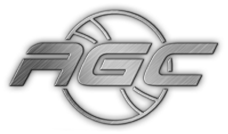To the casual observer, it might appear that cars continue to be redesigned, assume new shapes and colors, but haven’t changed radically in many years. The fact is, cars have changed more since 2008 than they did in the 30 years prior to 2008. This is due in-part to new, federally-mandated Corporate Average Fuel Economy (CAFÉ) standards to increase a vehicle’s fuel economy, advances in collision avoidance and collision mitigation systems, and advances in refinish technology.
Substrates
The metal, plastics and other materials comprising a vehicle’s body are commonly called substrates. In the earliest years of car building, a popular substrate was wood, which gave way to the more durable mild steel. Mild steel was relatively inexpensive, quite malleable so it could be formed into different shapes and was easily repaired in the field with basic tools and a torch. But it was quite heavy – and in a collision, it crumpled like paper.
The federal government established CAFÉ standards in the early 1970’s to force car makers to produce vehicles that got better fuel mileage. Vehicle fuel economy increased over the years and then stalled in the early 1980’s at around 26MPG. In 2008, the Obama administration mandated a sharp increase in CAFÉ standards. Auto makers scrambled to keep up creating advances in engine and transmission technology. But the vehicle itself had to get lighter so there was less mass to move down the road. This lead to the development and use of high-strength steel, ultra-high-strength steel, aluminum, magnesium, fiberglass, and carbon fiber. These materials, especially high strength steel were lighter yet much stronger than mild-steel removing hundreds of pounds of vehicle weight. This increased fuel economy and produced a car that could better withstand collisions and protect the occupants.
All late model cars use some degree of these new materials, especially high-strength and ultra-high-strength steels and aluminum. These new materials have a different molecular structure than the mild steel of old and require new tools, equipment and methods to make safe and proper repairs. In fact, using old repair methods on high-strength steel can actually do more harm than good leaving the vehicle occupants at risk in the event of a subsequent crash.
At AGC Collision, we specialize in the following:
- Auto Glass Repair
- Specialty Aluminum & Steel Repair
- Boron and Ultra High-Strength Steel Repair
- Carbon Fiber Repair
- Fiberglass Repair
- Frame Straightening
- Hybrid & Electric Vehicle Repair
- Paintless Dent Repair
- Plastic Repair
- Complex Electronic Repair
- Uni-body Repairs
ADAS Systems
For decades, automotive pundits have written about self-driving cars – vehicles that would carry us safely and efficiently across town or across the nation while we read a newspaper, played cards or watched our favorite television show. Those days are almost here.
In recent years, auto makers have been developing self-driving technology one piece at a time. Different auto makers refer to their systems in different terms but collectively they are known as Advanced Driver Assist Systems, or ADAS for short. These include but are not limited to:
- Collision Mitigation Braking Systems
- Lane Keeping Assist Systems
- Lane Departure Warning System
- Adaptive Cruise Control
- Cross Traffic Monitor (to assist backing)
- Auto Braking Systems
- Traffic Sign Recognition Systems
- Forward Collision Warning Systems
- Blind Spot Information System
- High Beam Support System
- Pedestrian Sensors
- Active Steering Guidance
- Traffic Sign Scan and Heads Up Sign Display
- Turn Assist
- And more…
To function properly, these systems depend on cameras, radar or other sensors hidden in such places as rear view mirrors, behind bumper covers, behind grills and some are even integrated into the vehicle’s name plate or grill emblem.
After a crash, the body shop must “scan” a vehicle to see which of these systems (or other electronic systems) are operating properly or not. Once the failed or damaged components are replaced, they must be re-calibrated to ensure they are functioning properly. A sensor or camera that is off by one or two degrees could mean the difference between the system working properly… or not. It could mean the difference between avoiding your next collision… or not.
Because of the complexity of these systems, and the cost of recalibration equipment and the diversity of equipment used by different car makers, your body shop may sublet these repairs to the local car dealer.
Paint
Early automotive paint was applied with a brush. While it enhanced the beauty of the vehicle the paint was not very durable. It was subject to cracking, crazing, and fading. It was not uncommon to have a car completely repainted after a year or two due to severe paint deterioration.
Today, automotive coatings are extremely durable, provide exceptional protection over various substrates and are available in colors not even imagined just a few years ago. Modern automotive coatings are applied in multiple stages of color and clear with high-tech spray equipment in a controlled environment. Its application is both a science and an art requiring years of training and experience. Color matching, and “hiding” the repair is an art unto itself.
At AGC Collision, we insist on nothing but the best in auto refinishing. That means BASF Glasurit. Founded in 1888, Glasurit was first used to paint ocean-going ships. In 1964 Glasurit developed a product for automotive application. Backed by BASF, one of the oldest, largest and most prestigious chemical companies in the world, Glasurit has become their premier paint brand offering world class quality, unsurpassed durability and European-style gloss.
Choose a Professional – Choose AGC Collision
Because of the changes in vehicle design, manufacture, substrate and paint coating, it is imperative to have collision damage repaired by professionals, technicians who know how to properly repair the new substrates, repair ADAS systems, and properly apply the latest paint coatings. AGC Collision stands ready to be your professional collision repairer.





You must be logged in to post a comment.